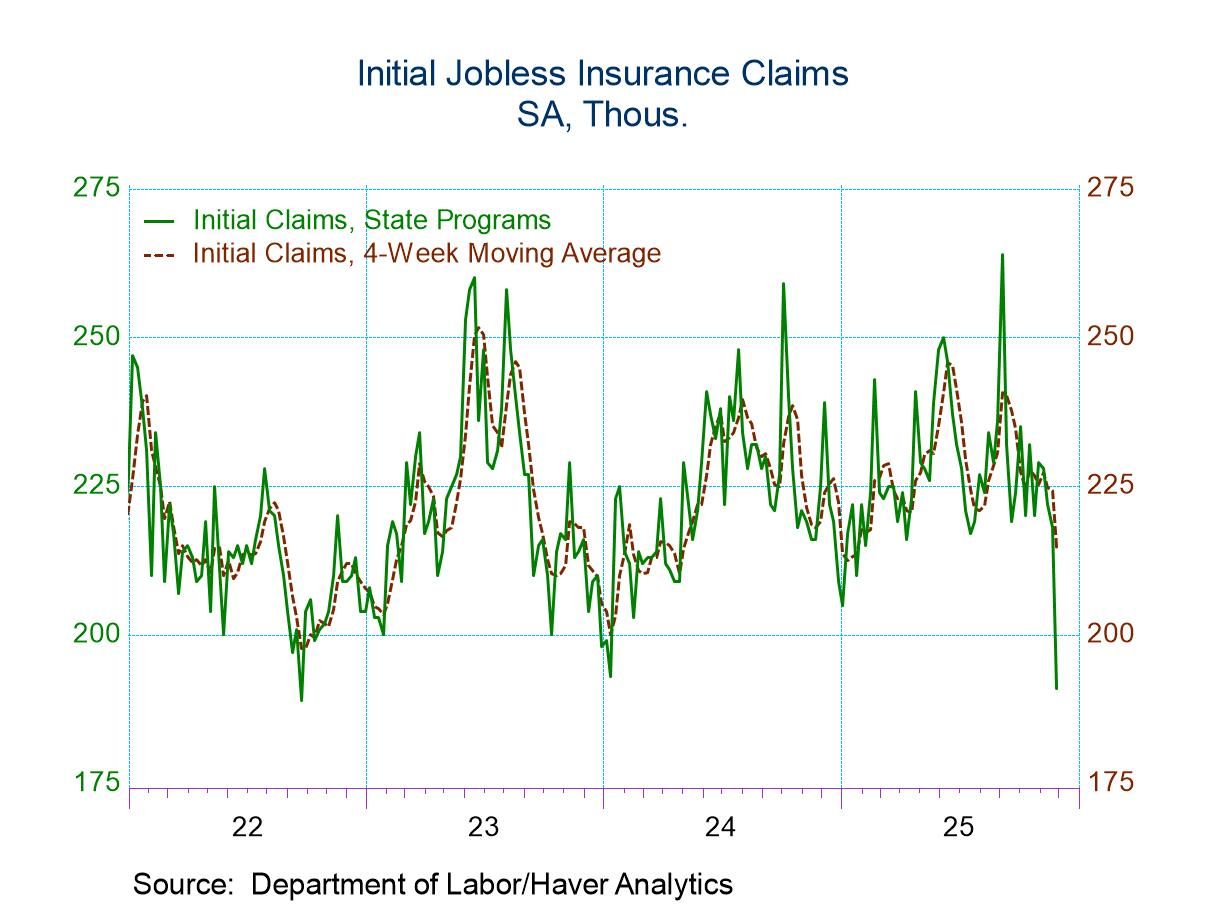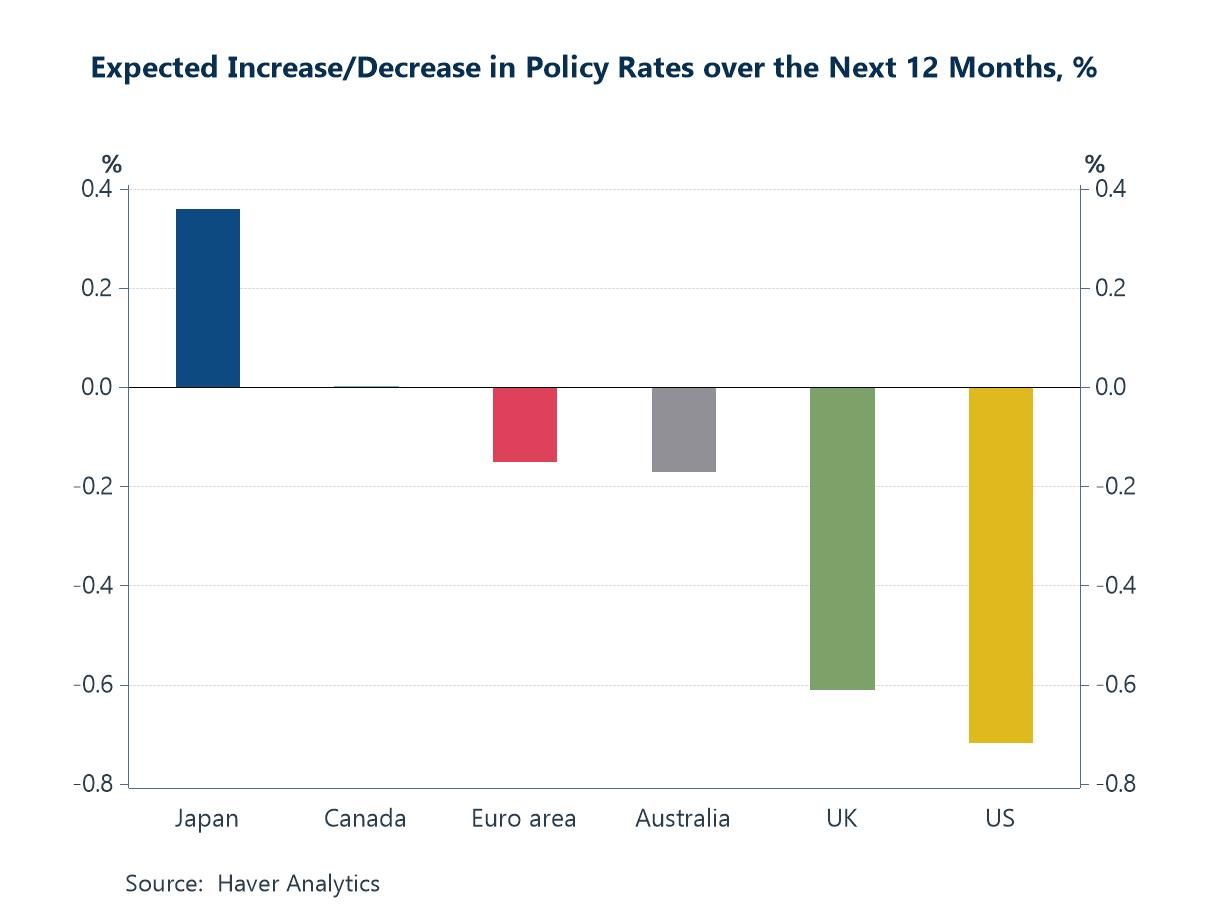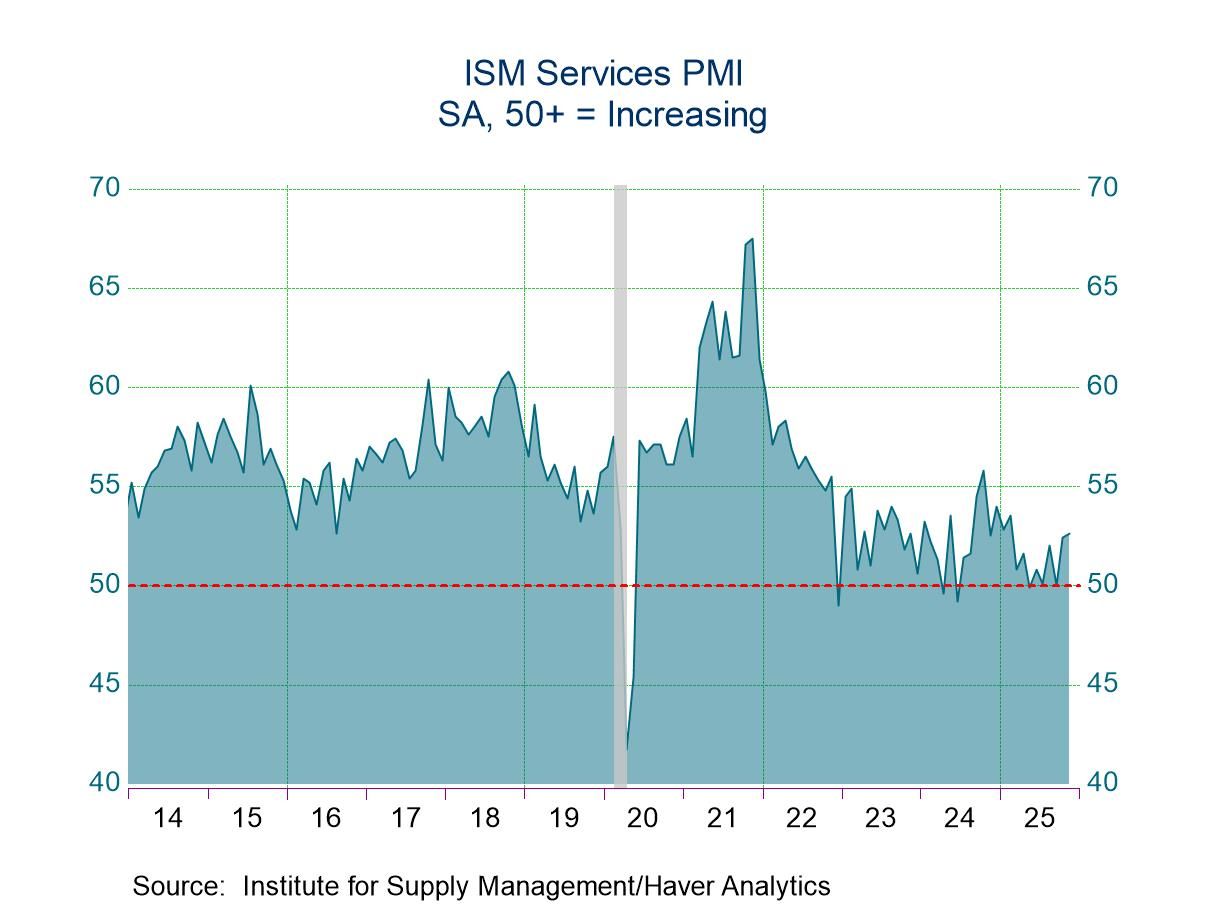U.S. ADP Payroll Employment Unexpectedly Declines in June
by:Tom Moeller
|in:Economy in Brief
Summary
- Employment declines in several service industries; factory & building industry jobs rise.
- Wage growth moderates further.
- Small- & medium-sized shed jobs.


The ADP National Employment Report reported that nonfarm private sector payrolls declined 33,000 (+1.1% y/y) during June after rising 29,000 in May, revised from 37,000 and increasing an unrevised 60,000 in April. It was the first monthly decline since March 2023. A 110,000 June rise had been expected in the in the Action Economics Forecast Survey.
Small business hiring (less than 50 employees) declined 47,000 (+0.4% y/y), after falling 13,000 in May. These were the first back-to-back monthly declines since the end of 2023. Employment at medium-sized firms (50-499,000 employees) declined 15,000 (1.1% y/y), after rising 46,000 in May, revised from 49,000. Large business hiring (500+ employees) increased 30,000 (2.7% y/y) after easing 4,000 in May.
Goods-producing employment rose 32,000 (1.4% y/y) in June after falling a minimally revised 3,000 in May. Manufacturing jobs increased 15,000, unchanged y/y, following a 6,000 decline in May. The number of construction sector jobs rose 9,000 (2.8% y/y) after increasing 6,000 in May. Natural resources & mining jobs rose 8,000 (4.3% y/y) in June after falling 3,000 in May.
The decline in payrolls overall reflected weakness in the service sector where the number of service-producing jobs declined 66,000 last month (+1.1% y/y) after increasing 32,000 in May, revised from 36,000. Professional & business services employment fell 56,000 (+0.2% y/y), after declining 13,000 in May. These weak readings came after a 1,000 April gain and a 46,000 March increase. Education & health services employment declined 52,000 (+0.8% y/y), the third consecutive month of decline. Employment in the financial industry weakened 14,000 (+1.8% y/y) last month, after rising 17,000 in May.
Offsetting these declines, leisure & hospitality employment increased 32,000 in June (3.2% y/y), following a 43,000 May gain. Monthly increases have averaged 36,000 this year. Trade, transportation & utilities employment increased 14,000 (0.3% y/y) after falling 8,000 in May. Information sector employment rose 5,000 (0.2% y/y) after a 4,000 May increase and a 10,000 April decline. Employment in “other” services sectors rose 5,000 in June (2.9% y/y), the same as in May.
Growth in median annual pay for "job stayers" slipped to 4.4% y/y in June, down from a high of 7.8% in September 2022. Manufacturing sector pay grew 4.6% y/y, steady with May. Construction sector pay also rose a steady 4.6% y/y. Natural resource & mining sector pay grew 4.5% y/y last month. Financial sector earnings rose an improved 5.2% y/y, while education & health services pay rose a lessened 4.6% y/y. Leisure & hospitality pay increased 4.7% y/y in June. Professional & business service sector pay increased a lessened 4.2% y/y as did trade, transportation & utilities pay, up 4.2% y/y. Information pay rose a lessened 4.1% y/y. Median annual pay for “job changers” rose 6.8% y/y in June, down from a high of 16.1% y/y in April 2022.
By region, employment in the Midwest declined 24,000 (+1.3% y/y) to 28,761 million after a 17,000 rise in May. Employment in the West, declined 20,000 to 31,363 million (+0.5% y/y) last month, and reversed a 31,000 rise during May. Employment in the Northeast fell 3,000 to 24,116 million (+1.4% y/y) in June, following a 23,000 decline in May. Partially offsetting these declines, in the South employment increased 13,000 to 50,092 million (1.0% y/y) in June, after rising 2,000 in May.
The ADP National Employment Report and Pay Insights data can be found in Haver's USECON database. Historical figures date back to January 2010 for private employment. Pay data date back to October 2020. The expectation figure is available in Haver's AS1REPNA database.


Tom Moeller
AuthorMore in Author Profile »Prior to joining Haver Analytics in 2000, Mr. Moeller worked as the Economist at Chancellor Capital Management from 1985 to 1999. There, he developed comprehensive economic forecasts and interpreted economic data for equity and fixed income portfolio managers. Also at Chancellor, Mr. Moeller worked as an equity analyst and was responsible for researching and rating companies in the economically sensitive automobile and housing industries for investment in Chancellor’s equity portfolio. Prior to joining Chancellor, Mr. Moeller was an Economist at Citibank from 1979 to 1984. He also analyzed pricing behavior in the metals industry for the Council on Wage and Price Stability in Washington, D.C. In 1999, Mr. Moeller received the award for most accurate forecast from the Forecasters' Club of New York. From 1990 to 1992 he was President of the New York Association for Business Economists. Mr. Moeller earned an M.B.A. in Finance from Fordham University, where he graduated in 1987. He holds a Bachelor of Arts in Economics from George Washington University.






 Global
Global